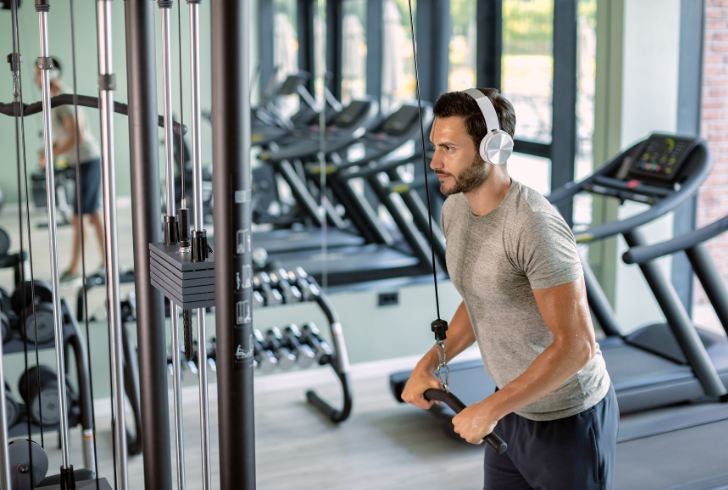Walk into any gym and the evidence is immediate: almost every head is wrapped in headphones, people timing their reps to invisible beats. Strip away the music and you’ll notice workouts suddenly feel heavier, slower, oddly incomplete. That’s because songs don’t just play in the background—they sneak into the way we pace, focus, and even perceive pain.
The research is clear, but you don’t need a lab coat to know that a good tracklist can drag you through that last set when your body wants to quit.
The Brain’s Bright Spark
Neuroscientists talk about dopamine like it’s some distant concept, but you’ve felt it—every time the right chorus drops and suddenly running feels less like punishment and more like momentum. The brain’s reward system doesn’t light up equally for every track, though.
There’s a world of difference between a playlist of random “motivational hits” and one filled with your personal anthems. That distinction explains why your friend thrives on heavy metal during squats while you hit your stride only when Beyoncé shows up. It’s not taste alone—it’s a neural response wired to your history with the song.

Using Music to Fuel Drive
Think of the best group class you’ve taken. Chances are, you don’t remember every exercise, but you do remember the drop in the music right when the instructor yelled, “Last round!” That synchronicity isn’t accidental. Trainers know tempo can whip up collective energy, and people push harder when movement and music lock together.
Conversely, the wrong soundtrack can tank a session. If the vibe clashes with the workout, you’ll notice people lose form, slack off, or even check out early. That’s motivation in its raw, audible form.
Less Burn, More Groove
Here’s a trick seasoned runners and lifters already rely on: music isn’t just about drive, it’s about dulling discomfort. The body sends constant signals of strain—your legs ache, your chest tightens—but the brain doesn’t process pain in isolation. Add rhythm, and those signals get diluted.
It’s why a two-minute plank with silence feels like torture, but the same plank with your favorite bassline feels survivable. This distraction effect is less about ignoring pain and more about reframing it—giving the mind something else to chew on while the muscles grind.
Tempo That Talks to Your Feet
The relationship between beats per minute and performance is surprisingly literal. Runners who sync to songs in the 160–180 BPM range often find their stride evens out without conscious effort. Cyclists lock into cadence the same way.
On the flip side, slower tracks—think 90–110 BPM—help lifters control form during deadlifts or presses, where precision matters more than speed. Athletes sometimes even use playlists as pacers: faster songs for high-intensity intervals, slower ones to signal a deliberate gear-down for recovery.
Mind and Muscle Both Get a Boost

The benefits aren’t just in the head. Physiological shifts show up too: elevated heart rate when the chorus climbs, smoother coordination when repetitive movements sync with rhythm, and longer endurance because the body simply doesn’t register fatigue as early. It’s a bit like tricking yourself into running on autopilot, though the machine in this case is your nervous system responding to auditory cues.
Building the Right Playlist
Think of playlist building as a craft, not background noise. Stock it with quick hitters for cardio spikes, steady grooves for long hauls, and slower cuts to ease the body down. Keep switching things up—songs lose their kick once they become predictable.
That anthem that had you sprinting last week might sound dull today. Music is like footwear: it only does its job if you keep it fresh and suited to the task.
Why Music Belongs to Training
The right soundtrack won’t erase the grind but shifts how you meet it. Fatigue feels less heavy, drills feel less mind-numbing, and endurance feels more reachable. On good days, a beat can flip misery into momentum. And unlike pricey gadgets or supplements, a set of headphones and the right track are cheap, portable, and intensely personal.




